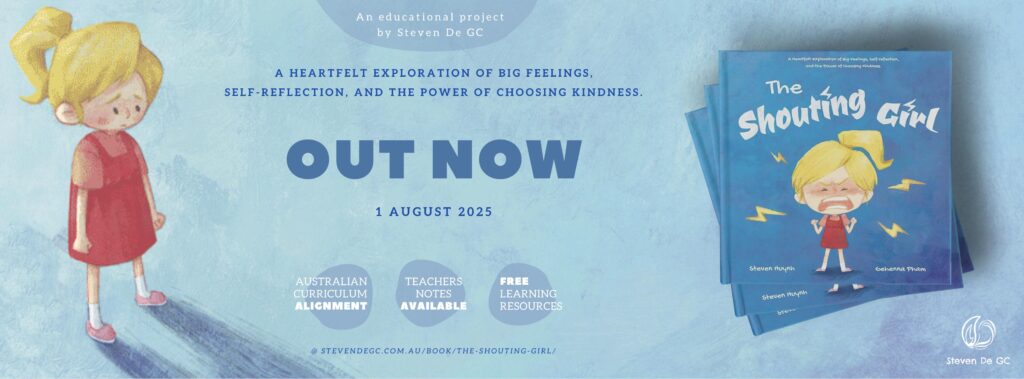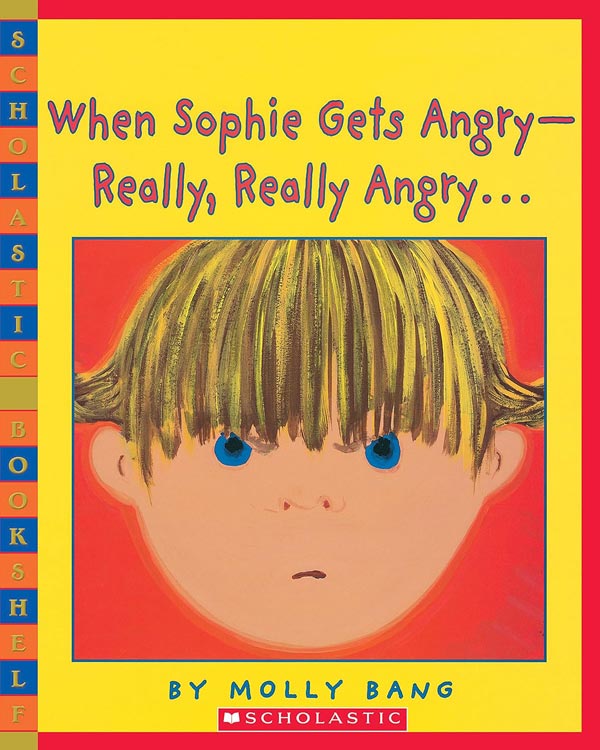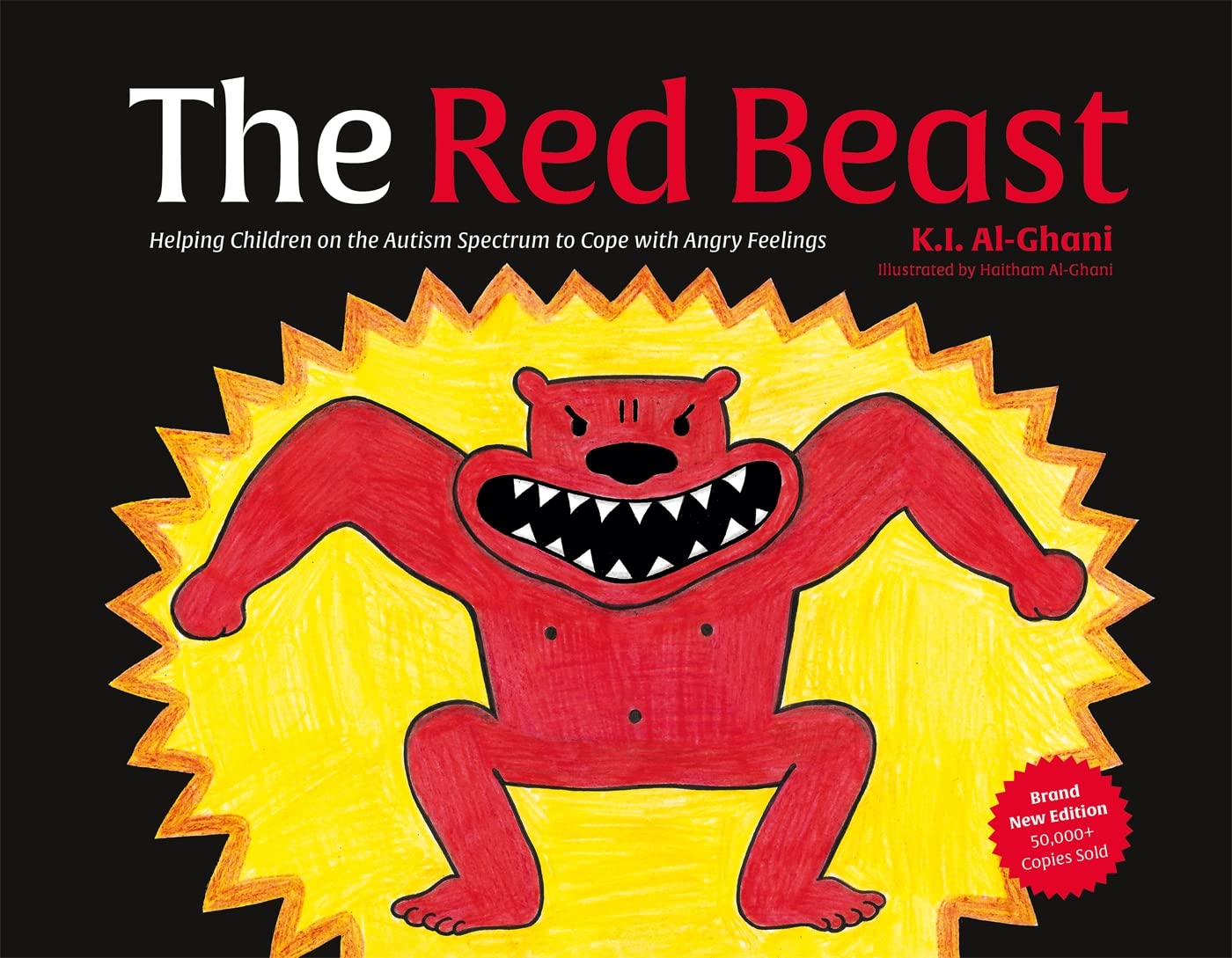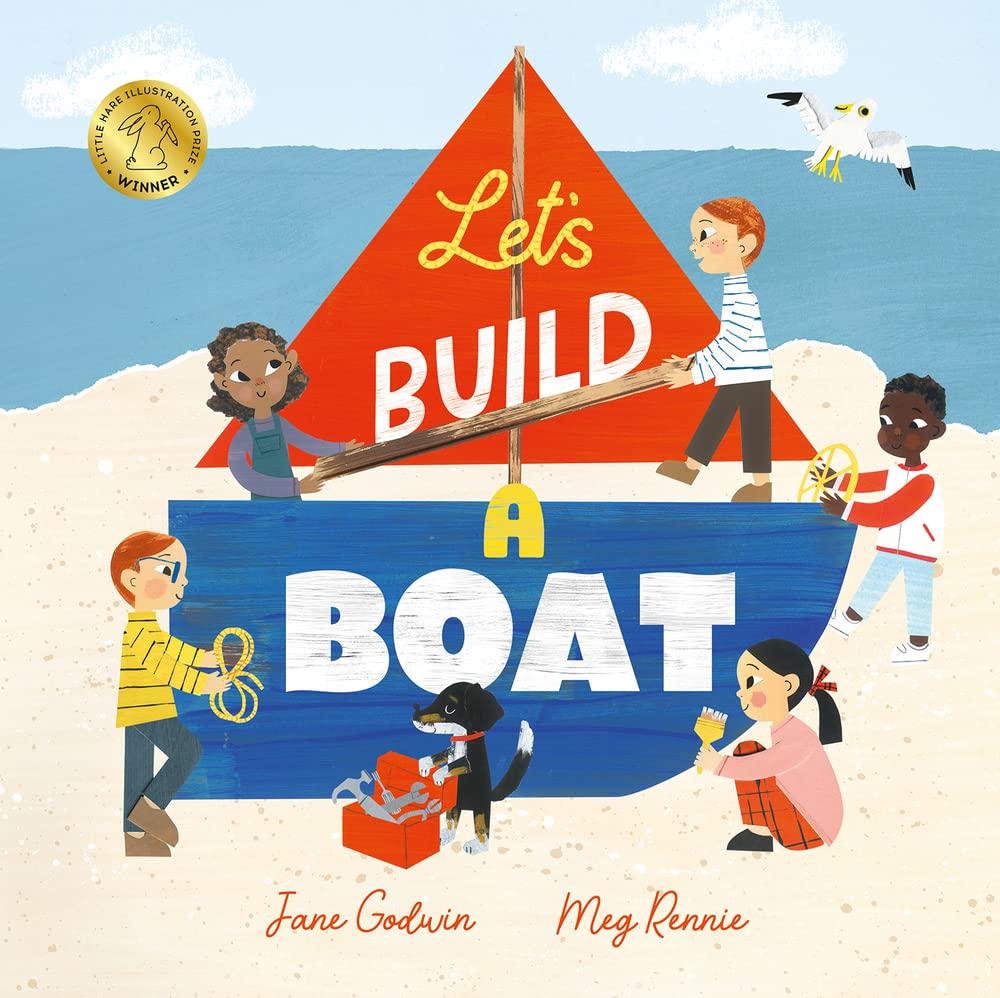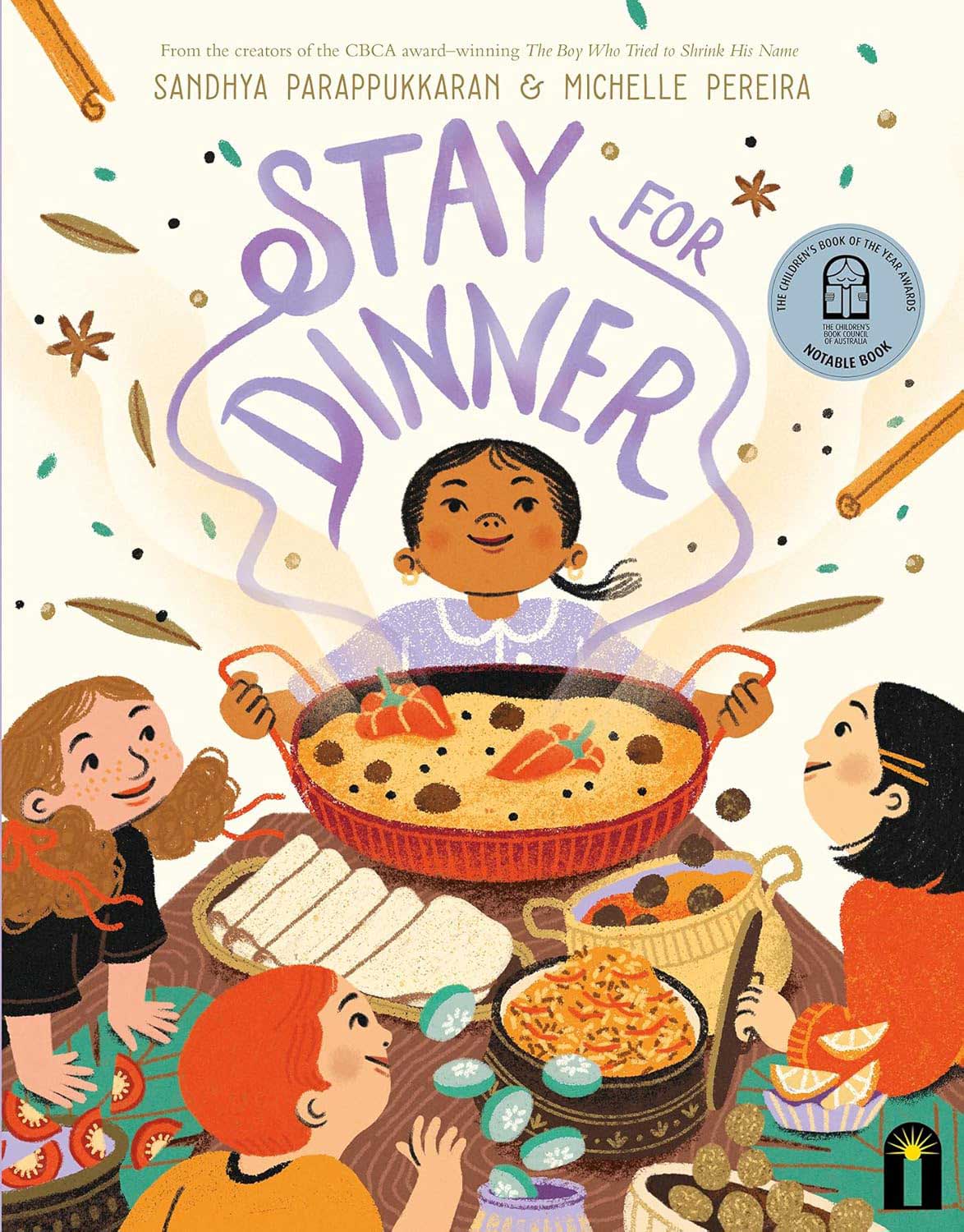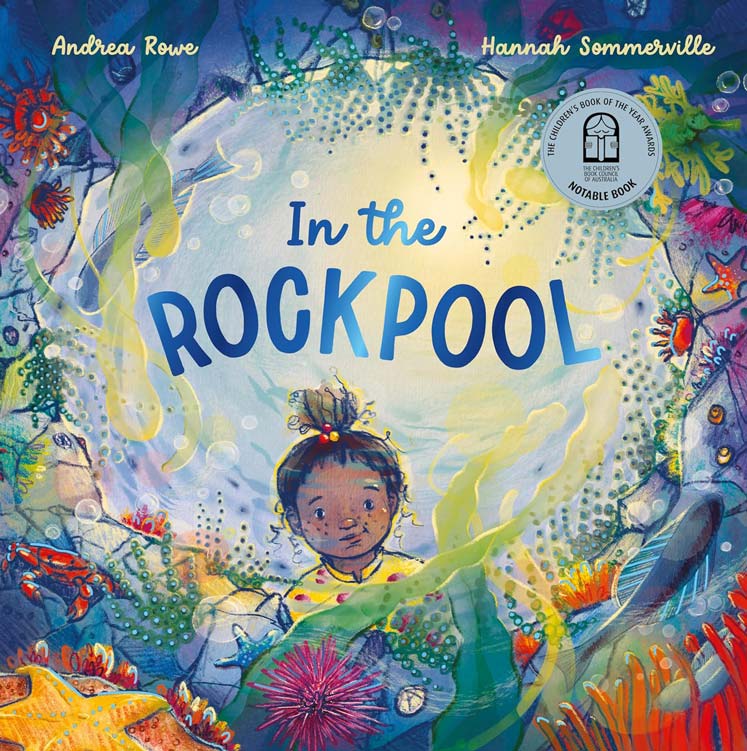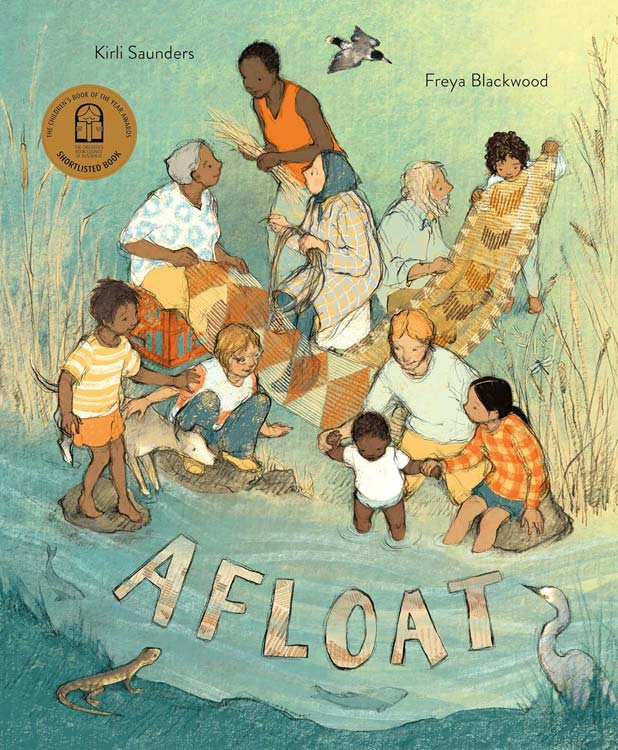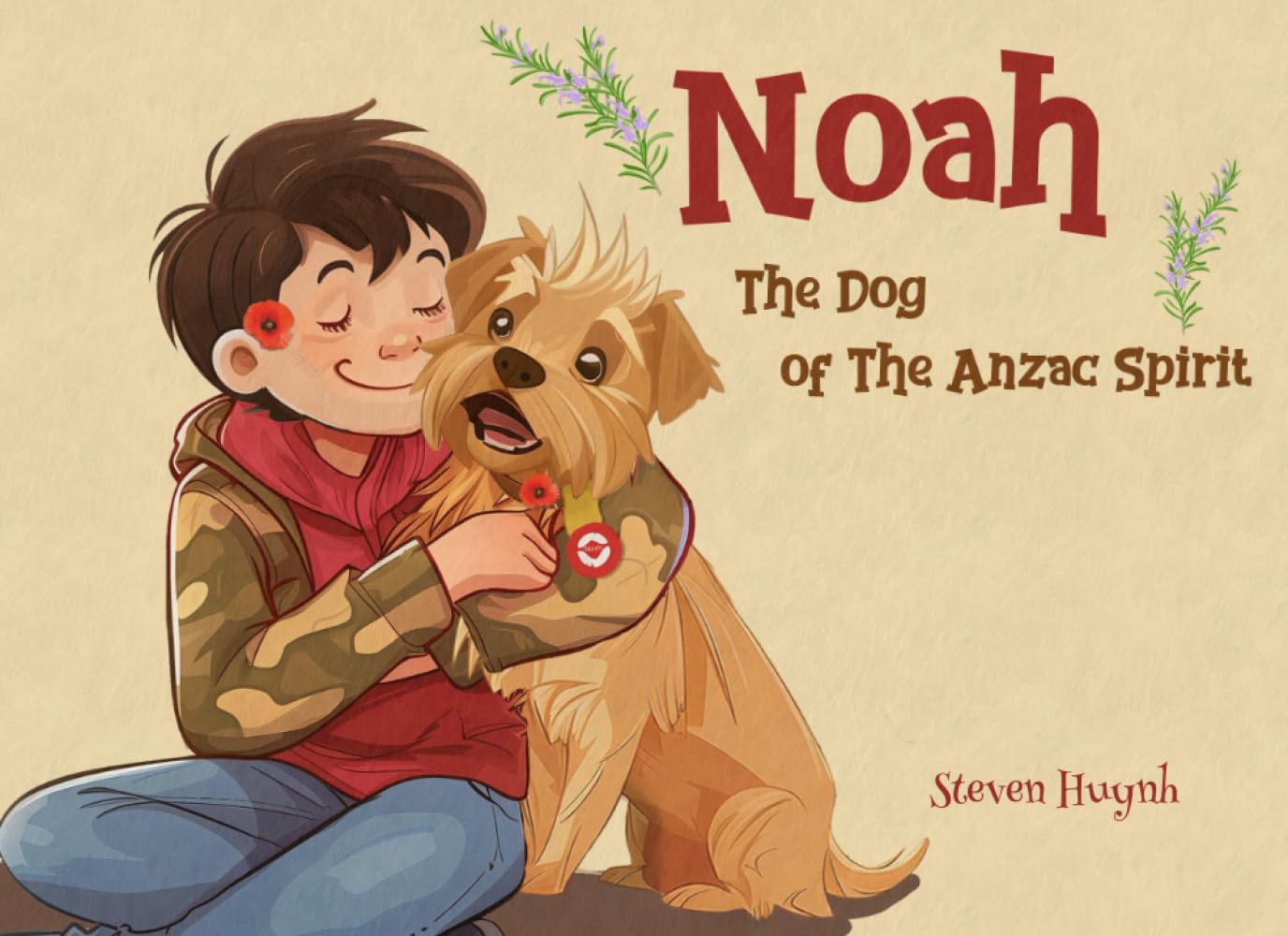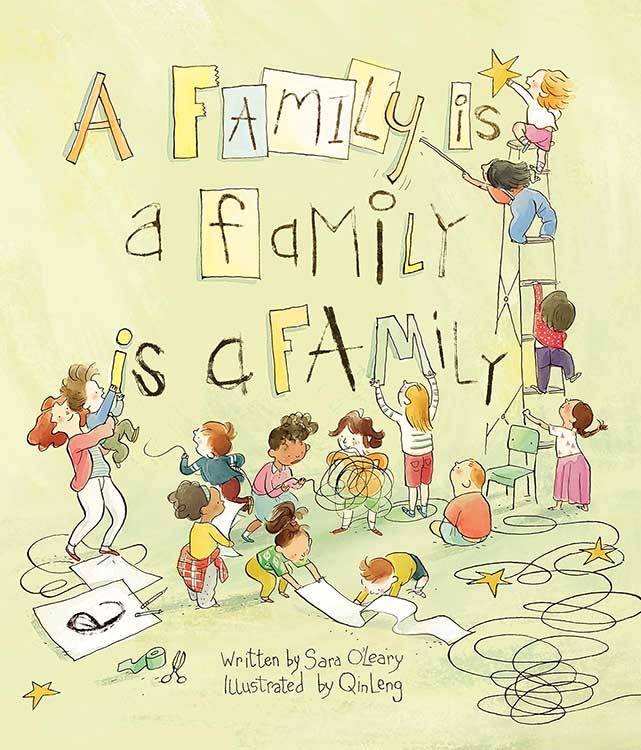Books
We Feature Children’s Books Aligned with the Australian Curriculum
Browse our collection of thoughtfully selected children’s books that align with the Australian Curriculum across key learning areas: Science, Mathematics, Design and Technologies, English (Literacy and Literature), Humanities and Social Sciences (HaSS), and Health and Physical Education. These books are perfect for junior primary students in Foundation (age 5), Year 1 (age 6), and Year 2 (age 7).
Explore a wide range of engaging topics, from the natural world and problem-solving to social understanding and emotional wellbeing. Each book supports deeper classroom discussion and helps bring curriculum content to life through stories that children love.
Ideal for educators, librarians and parents looking for curriculum-aligned picture books that inspire learning and curiosity.
Expand | Collapse Search filter
-
Written by Steven Huynh
Illustrated by Gehenna Pham
Published by Steven De GC
Theme/topic: Emotion recognition, Emotional regulation, Inclusion, Recount, Rhyme, and Vocabulary expansion
The story follows a young girl who struggles to express herself calmly, often shouting when she feels frustrated or unheard. Through her journey, she learns to recognise and understand her emotions (AC9HPFP03, AC9HP2P03 – Foundation to Year 2, Health and Physical Education) and works to develop positive strategies for expressing her thoughts and feelings in respectful ways (AC9HPFP02, AC9HP2P02 – Foundation to Year 2, Health and Physical Education).
The story also encourages children to explore characters’ perspectives and emotional responses, fostering empathy (AC9HP2P01 – Health and Physical Education, Years 1 and 2). It helps them define safe and unsafe environments, such as calm corners, through interactions with friends in a classroom, establishing help-seeking strategies in such situations (AC9HP2P05 – Health and Physical Education, Years 1 and 2).
With its poetic language and engaging illustrations, The Shouting Girl helps students understand how rhyme and rhythm create cohesion in a text. It also explores how words and images shape settings and characters, along with other literary features such as lists of three and similes.
Written by Mike Brownlow
Illustrated by Simon Rickerty
Published by Orchard Books
Theme/topic: 0 – 10 and Counting
This delightful rhyming adventure captivates young readers with its playful text and vibrant illustrations. The story counts down from 10 to 1 as a group of mischievous little dinosaurs encounters various adventures and challenges, blending humour with basic counting skills (ACMNA001, AC9MFN01 – Foundation Year, Mathematics). It connects number names, numerals, and the number of dinosaurs (ACMNA002 – Foundation Year, Mathematics), making it a valuable tool for early numeracy. The rhymes and repetitive patterns not only entertain but also foster language development and phonemic awareness (ACELA1439 – Foundation Year, English). With its engaging narrative and educational focus, Ten Little Dinosaurs is a perfect read-aloud choice for young children, combining fun and learning in one enjoyable package.
Written by Katrina Germein
Illustrated by Bronwyn Bancroft
Published by Picture Puffin
Theme/topic: Days of the week and Weather impacts
Big Rain Coming by Katrina Germein is a beautifully written and atmospheric story that captures the anticipation of rainfall in a remote Australian Indigenous community. Throughout the week, the land remains dry, and the people wait patiently for the relief that the rain will bring. The book helps students explore observable weather changes and how they impact the environment and daily life (ACSSU004 – Foundation Year; AC9S1U02 – Year 1, Science). It also help kids compare and recognise the extensive knowledges of daily and seasonal changes in weather patterns and landscape held by First Nations Australians.
The timely, predictable text encourages children to recognise and describe the sequence of the days of the week, supporting their understanding of time (ACMMG007, AC9MFM02 – Foundation Year, Mathematics). With its rich language and evocative illustrations, Big Rain Coming fosters curiosity about weather patterns and seasonal changes while promoting discussions about patience, resilience, and connection to the land.
Written by Jo Witek
Illustrated by Christine Roussey
Published by Abrams Appleseed
Theme/topic: Emotion recognition
In My Heart: A Book of Feelings by Jo Witek is a beautifully illustrated story that explores a wide range of emotions in a way that is accessible to young children. The book follows a young girl as she describes how different feelings manifest in her heart—whether it flutters with happiness, feels heavy with sadness, or pounds with excitement.
Through expressive language and vivid imagery, the book helps children recognise, name, and understand their emotions, supporting their ability to describe how their body reacts to different feelings and situations (AC9HPFP03 – Foundation Year, Health and Physical Education). The engaging die-cut heart illustrations add a tactile element, reinforcing the idea that emotions come in many forms and are a natural part of life. In My Heart is a valuable resource for fostering emotional literacy, encouraging self-awareness, and promoting discussions about feelings in a comforting and relatable way.
Written & illustrated by Molly Bang
Published by Scholastic Press
Theme/topic: Emotion recognition and Emotional regulation
The picture book explores the intense feelings that come with anger and how children can learn to manage them. When Sophie feels overwhelmed, her body reacts in strong and noticeable ways: her face gets hot, her fists clench, and she feels like exploding. This allows students to describe what anger looks and feels like physically (AC9HPFP03 – Foundation Year, Health and Physical Education), helping them recognise emotional cues in themselves and others.
As Sophie removes herself from the situation, takes time to cool down in nature, and eventually returns feeling calm, the story models simple and effective emotional regulation strategies (AC9HP2P03 – Years 1 and 2, Health and Physical Education). These moments provide powerful prompts for children to reflect on their own ways of calming down and regaining control during emotionally charged moments.
When Sophie Gets Angry — Really, Really Angry is a gentle yet impactful resource for developing emotional literacy, supporting children in identifying and managing their big emotions in healthy ways.
Written by K.i. Al-Ghani
Illustrated by Haitham Al-Ghani
Published by Jessica Kingsley Publishers
Theme/topic: Emotion recognition and Emotional regulation
This powerful story helps children understand and manage anger through the metaphor of a ‘red beast’ that awakens when feelings become overwhelming. The book offers a safe and engaging way for students to explore what anger looks and feels like in the body (AC9HPFP03 – Foundation Year, Health and Physical Education), using clear language to describe both the emotional and physical signs of big feelings.
As the main character learns how to calm the red beast, readers are introduced to strategies for emotional regulation (AC9HP2P03 – Years 1 and 2, Health and Physical Education). The narrative also opens up conversations about how certain behaviours and language can cause hurt and harm to others (AC9HPFP02, AC9HP2P02 – Foundation to Year 2, Health and Physical Education). Through reflection and discussion, children are encouraged to build empathy and make respectful choices in how they express emotions.
The Red Beast is an essential resource for supporting social-emotional learning in early years classrooms, offering practical tools to help children recognise, name, and regulate big emotions in themselves and others.
Written & illustrated by Anna Llenas
Published by Templar
Theme/topic: Emotion recognition
This delightful picture book helps young children understand and identify their emotions. The story follows a confused monster whose feelings are all mixed up, leading a young girl to guide him in sorting and recognising each emotion by associating them with specific colours.
Through vibrant illustrations and engaging narrative, the book encourages children to explore their own feelings and develop emotional awareness. It supports children’s ability to recognise and describe how their body reacts to different emotions and situations (AC9HPFP03 – Foundation Year, Health and Physical Education).
The Colour Monster is an excellent resource for parents and educators to initiate conversations about emotions and support children’s social and emotional development.
Written by Jane Godwin
Illustrated by Meg Rennie
Published by Little Hare Books
Theme/topic: Colaborating, Evaluating, Friendship, Narrative, Persistence, Producing, Rhyme, and Teamwork
This inspiring picture book celebrates teamwork, creativity, and determination. As a group of children come together to build a boat for their picnic on an island, the story naturally lends itself to discussions about the purpose of a boat in general and context of the text (AC9TDE2K01 – Years 1 and 2, Design and Technologies). The story also highlights the importance of preparation before they begin (AC9TDE2P01 – Years 1 and 2, Design and Technologies), innovation and problem-solving when they face the challenge at sea (AC9TDE2P03 – Years 1 and 2, Design and Technologies).
Throughout their journey, they experience challenges and moments of joy, allowing students to reflect on how they manage emotions in different situations (AC9HP2P03 – Years 1 and 2, Health and Physical Education). The story also supports children in understanding how teamwork, resilience, and problem-solving help them to achieve shared goals (AC9HP2P01 – Years 1 and 2, Health and Physical Education).
Let’s Build a Boat is a perfect launchpad for hands-on STEM or creative projects, as well as social-emotional learning discussions around collaboration, effort, and celebrating differences.
Written & illustrated by Bronwyn Bancroft
Published by Little Hare Books
Theme/topic: Culture, First Nations, Shapes, Visual Arts, and Vocabulary expansion
The book is an artistic exploration of Australia’s diverse landscapes through the lens of geometric shapes. The book introduces young readers to the natural world by identifying and describing various shapes found in the environment, such as circles in the treetops, triangles in the mountains, and spirals in shells. This aligns with the learning objective AC9MFSP01, ACMMG006 (Mathematics, Foundation Year), which focuses on identifying and describing familiar two-dimensional shapes in the environment. Additionally, the book supports AC9AVAFD01, ACAVAM106 (Visual Arts, Foundation Year) by encouraging young readers to explore how visual arts express ideas about the world. Through Bancroft’s detailed and culturally rich illustrations, children learn to interpret and appreciate the unique beauty of Country through the use of shapes and patterns in visual storytelling. This beautifully illustrated book not only enhances children’s geometric understanding but also deepens their appreciation for the visual arts, making it a valuable resource for integrated learning in mathematics and art.
Written by Anna Milbourne
Illustrated by Sarah Gill
Published by Usborne Picture Books
Theme/topic: Vocabulary expansion and Weather impacts
The book explores weather patterns and the daily changes in the environment during a rainy day. As the characters observe the sky darkening, raindrops falling, and puddles forming, students are encouraged to describe daily changes in the environment and explore how these changes affect everyday life (ACSSU004 – Foundation Year; AC9S1U02 – Year 1, Science).
Teachers can explore these suggested learning points with children: investigating how changes in the weather affect plants and animals, including humans; exploring how people make clothing choices using predictions of weather; and investigating how rain or clouds are formed.
With engaging language and vivid imagery, The Rainy Day supports early scientific thinking by prompting discussions about the water cycle, seasonal changes, and the role of rain in nature. This book is an excellent resource for developing curiosity and appreciation for the natural world.
Written by Rebecca Hirsh
Illustrated by Mia Posada
Published by Millbrook Picture Books
Theme/topic: Basic needs, External features, and Vocabulary expansion
Plants Can’t Sit Still is a fascinating and poetic exploration of the many ways plants move, grow, and respond to their environment. Through engaging text and vivid illustrations, the book challenges the common perception that plants are motionless, showcasing how they creep, climb, curl, and reach toward the sun. It helps young readers observe and understand the external features of plants and how they help them survive (AC9SFU01 – Foundation Year, Science). The book also supports learning about how plants, like other living things, have basic needs, such as water, sunshine, and room to grow (AC9S1U01 – Year 1, Science). With its dynamic storytelling and rich scientific concepts, Plants Can’t Sit Still encourages curiosity about the natural world and inspires children to observe plants in action.
Written by Sandhya Parappukkaran
Illustrated by Michelle Pereira
Published by Bright Light
Theme/topic: Culture, Diversity, Emotion recognition, Identity, Narrative, and Vocabulary expansion
Stay for Dinner by Sandhya Parappukkaran is a vibrant celebration of cultural diversity and the connections made through shared meals. The story centres on a family preparing a special dinner for their child’s friends, offering a glimpse into various mealtime customs and table manners (AC9HP2P01 – Years 1 and 2, Health and Physical Education). Through the lens of this dinner, the book explores the emotional responses and questions that arise from cultural traditions (AC9HP2P03 – Years 1 and 2, Health and Physical Education), encouraging children to embrace diversity and appreciate the richness of different cultural backgrounds (AC9HP2P02 – Years 1 and 2, Health and Physical Education).
The narrative is brought to life with vivid sound and imagery words such as “squish,” “splash,” “slice,” and “prong,” capturing the sensory experience of the meal. Culinary terms like “papadum,” “sadhya,” and “dumpling” add authenticity and depth, inviting readers into the world of diverse cuisines. As the main character reflects on her and her friends’ mealtime experiences, the story underscores the importance of understanding and respecting different customs, fostering a sense of togetherness and mutual respect.
With its rich illustrations and heartwarming themes, Stay for Dinner inspires children to find joy in sharing meals and traditions, highlighting the value of friendship and cultural appreciation.
Written by Andrea Rowe
Illustrated by Hannah Sommerville
Published by Little Hare Books
Theme/topic: Counting, Habitats, and Ocean
The book invites young readers on a sensory exploration of the creatures and treasures found in coastal rockpools. The story encourages children to observe and describe the natural features of seaside habitats, including the plants and animals that live there, supporting understanding of animal needs and environments (AC9S1U01 – Year 1, Science).
As children engage with the rhythmic text and detailed illustrations, they also practise early number skills, such as counting shells, crabs, and other seaside items, reinforcing concepts of matching quantities with numerals and naming numbers in sequence (AC9MFN01 – Foundation Year, Mathematics).
This book is a rich cross-curricular resource, perfect for supporting science and maths learning through storytelling, observation, and wonder.
Written by Kirli Saunders
Illustrated by Freya Blackwood
Published by Little Hare Books
Theme/topic: Culture, First Nations, Identity, Producing, Sustainability, and Weaving
The book is a poetic and reflective story that gently explores connection to Country, identity, and community through the metaphor of water and weaving. Rooted in Aboriginal perspectives, the text provides a meaningful opportunity to learn about weaving as a cultural practice that strengthens identity and builds unity within community (AC9HP2P01 – Years 1 and 2, Health and Physical Education).
The story also opens conversations around sustainability and traditional knowledge, showing how weaving products are crafted from native plants found in local environments (AC9TDE2K01, AC9TDE2K03 – Years 1 and 2, Design and Technologies). By recognising the environmental sources and cultural significance of materials, Afloat supports an appreciation for First Nations practices and their role in caring for Country.
Written & illustrated by Steven Huynh
Published by Steven De GC
Theme/topic: Commemorations, Courage, Family history, Friendship, Important sites, Kindness, and Persistence
The story weaves themes of courage, kindness, and resilience with an appreciation for Australia’s history. Noah, a lovable and compassionate dog, dreams of becoming a hero like his owner’s grandfather, an Anzac veteran. Inspired by stories shared through photos of Grandpa (ACHASSK013 – Foundation Year, Humanities and Social Sciences), Noah finds daily motivation to use his strength—kindness—to help others (ACPPS001, ACPPS015 – Foundation to Year 2, Health and Physical Education).
The story also touches on the importance of commemorating past events, such as Anzac Day, that hold deep meaning for communities (ACHASSK012 – Foundation Year, Humanities and Social Sciences) and highlights a historical site dedicated to honouring Anzac soldiers (ACHASSK045 – Year 2, Humanities and Social Sciences). Through vibrant illustrations and an engaging narrative, Noah: The Dog of the Anzac Spirit inspires young readers to embody the Anzac values of perseverance and resilience (ACPPS020 – Years 1 and 2, Health and Physical Education), while fostering a connection to Australia’s rich cultural heritage.
Written by April Pulley Sayre and Jeffrey Sayre
Illustrated by Randy Cecil
Published by Walker Books
Theme/topic: Addition, Comparison, Counting, Grouping, and Repeated addition
This delightful and imaginative book introduces young readers to counting (ACMNA001, AC9MFN01 – Foundation Year, Mathematics) and basic multiplication concepts. By using the number of feet on various animals, the story encourages children to explore basic counting with feet (ACMNA002 – Foundation Year, Mathematics) and repeated addition, grouping, and arrays to represent numbers. This creative approach not only reinforces counting skills but also provides a playful foundation for understanding multiplication (ACMNA031 – Year 2, Mathematics). Additionally, the book supports early number recognition and sequencing as children practice counting and comparing quantities. With its vibrant illustrations and humorous scenarios, this book engages young learners while fostering critical thinking and problem-solving skills in an enjoyable way.
Written & illustrated by Jan Berenstain and Stan Berenstain
Published by Random House Books for Young Readers
Theme/topic: 0 – 20, Counting, and Subitising
This lively and engaging story introduces young readers to basic counting from 1 to 10 (ACMNA001, AC9MFN01 – Foundation Year, Mathematics). The simple yet entertaining narrative follows bears as they ride on wheels in various configurations, showcasing relationships between numbers and objects (ACMNA002 – Foundation Year, Mathematics). Through its use of repetitive patterns and clear visual representations, the book helps children practise subitising small collections (ACMNA003 – Foundation Year, Mathematics). With its playful illustrations and rhythmic text, Bears on Wheels is an excellent resource for building early numeracy skills in an enjoyable and interactive way.
Written & illustrated by Lucy Cousins
Published by Walker Books
Theme/topic: Rhyme and Shapes
Shapes with Little Fish is a bright and engaging picture book that introduces young children to basic shapes through playful underwater adventures. The book helps early learners name, describe and trace shapes (AC9MFSP01, ACMMG009 – Foundation Year, Mathematics) through simple, rhythmic text (AC9EFLY09, ACELA1439 – Foundation Year, English), which also supports reading while fostering early geometric awareness. In addition, the cheerful character of Little Fish guides readers through a lively exploration of shape recognition in an accessible and interactive way.
Written by Sara O’Leary
Illustrated by Qin Leng
Published by Groundwood Books
Theme/topic: Diversity, Family history, Identity, and Recount
This heartwarming book celebrates diverse family structures and the love that binds them together. Through a classroom discussion, children share stories about their families, highlighting the uniqueness of each one while reinforcing the idea that all families are special.
This book provides opportunities for young students to explore concepts of family by recognising and describing family members (AC9HSFK01 – Foundation Year, Humanities and Social Sciences). It also encourages children to develop a sense of self within their family (AC9HPFP01 – Foundation Year, Health and Physical Education) while practising personal and social skills to interact respectfully with others, particularly in understanding inclusion and acceptance (AC9HPFP02 – Foundation Year, Health and Physical Education).
With its gentle storytelling and wonderful illustrations, A Family is a Family is a Family fosters empathy, respect, and an appreciation for the many forms that family can take.
Written & illustrated by Ellen Stoll Walsh
Published by HMH Books
Theme/topic: Counting and Narrative
This charming story supports early maths and literacy development. As a hungry snake finds and counts ten mice one by one, children are invited to practise counting forward and backward, reinforcing the concept of matching quantities with numbers (AC9MFN01 – Foundation Year, Mathematics).
The story has clear features of a narrative, which create opportunities for children to share ideas about events, such as the problem and its resolution, and the characters in the text (AC9EFLE02 – Foundation Year, English). Children can also retell the story through drawing, role-playing, or sequencing events, building their comprehension and creative expression (AC9EFLE05 – Foundation Year, English).
With its simple text, bold illustrations, and engaging plot, Mouse Count is an ideal resource for integrating numeracy and literacy in early childhood learning.


